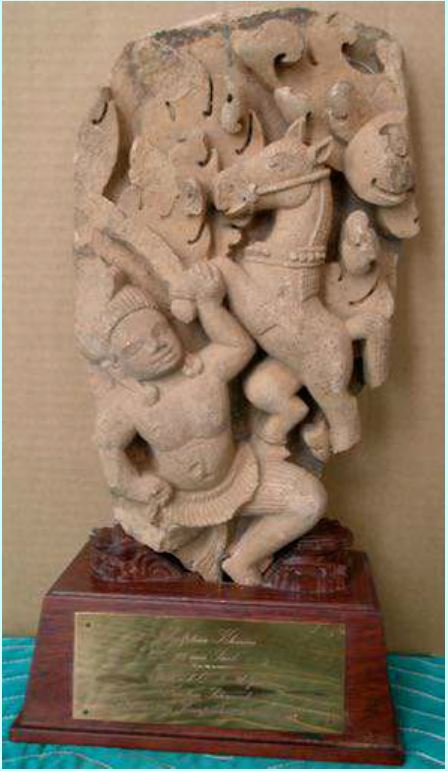
Sculpture Khmere
This sculpture depicts a kneeling man who is holding one of the front hooves of a rearing horse. The man is posed confidently, displaying a bare, muscular chest, with his free hand placed on his hip. His earlobes are stretched past his shoulders, a common motif in Buddhism representative of an individual’s rejection of the material world in favor of spiritual enlightenment. This stone sculpture has been executed using a deep relief carving method.
The artwork is an example of 10th century Khmer sculpture (French spelling Khmère). Khmer sculptures are from the Hindu and Buddhist Khmer Empire or Angkorian Empire, which reigned from the 9th - 15th century in modern-day Cambodia. The most celebrated examples of Khmer sculpture were created in the 10th century and can be found in Angkor, Cambodia. The style was inspired from Indian and Hindu influences. Through artistic evolution, it developed its own style, which reached its apex by the 10th century. By developing beyond the confines of religious scenes, this style later portrayed court figures as gods and goddesses.
The gift was given by President of Democratic Kampuchea, Norodom Sihanouk (1922 – 2012), and he held this office from 17 April 1975 – 2 April 1976. Prince Norodom Sihanouk held many positions within Cambodia’s government, including King of Cambodia 1941-1955 and 1993-2004, Prime Minister 1945, 1950 and then 1952 to 1962 (off & on), Chief of State of Cambodia 1960-1970, 1993 and President of Democratic Kampuchea 1975-1976. Cambodia became a Member State of the United Nations in 1955.

